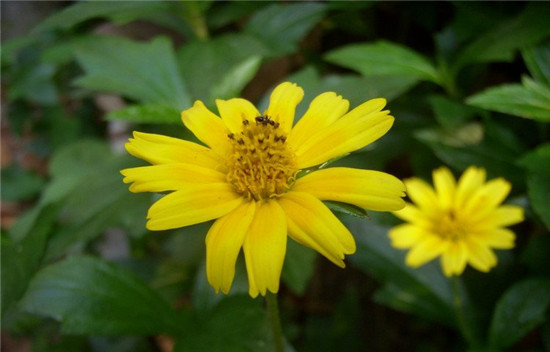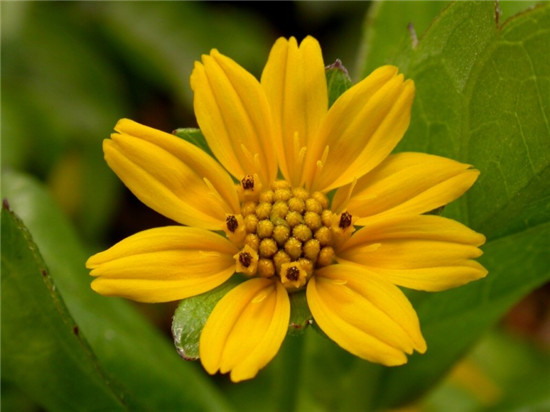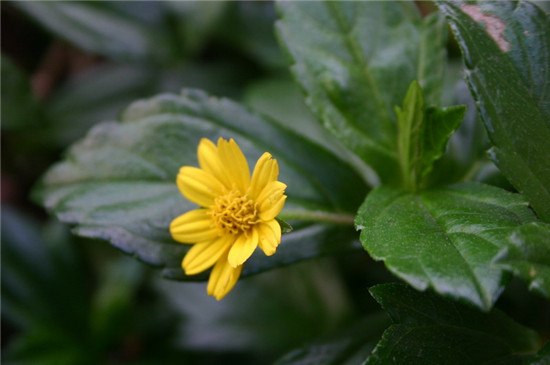The cultivation of Eriochrysanthemum morifolium in South America Propagation of Euphorbia humilis
South American chrysanthemum, alias trifid leaf chrysanthemum, Dijinhua, piercing dragon. Next, let's take a look at the reproduction of chamomile in South America.

South American chrysanthemum has two kinds of florets: tubular flower and pseudoglossal flower, in which the petal appendage structure (fleshy thorn) of tubular flower may affect the normal pollination to some extent, and there is no obstacle in pollination medium. the main media are horned wasp and sorrel butterfly. The pollen vigor and stigma receptivity are poor, the seed setting rate is very low, and the seed germination rate is low under normal conditions.
The stem creeping and lying on the ground spread, the upland cultivation was drape, and the ground cultivation was creeping. All densely stiff short hairs, easy to root from nodes. Without stipules, leaves opposite elliptic to Obovate, base cuneate, apex trifid sharply obtuse, lower part slightly 3-lobed, upper shallowly serrate margin, thick, shortly setose, glossy, double-sided rough, palmate veins 3 obviously sunken.
Capitate flowers yellow axillary, long-stalked, double-flowered chrysanthemum with elongated stems angled and hirsute. Its leaves are ovate, cross opposite arrangement is about 5-14 cm long, 4-8 cm wide, the edge of the leaf is serrated; although the leaf feels paper, it feels thick because the upper and lower surfaces are covered with flat bristles; the petiole is quite long, usually 1.2 cm long, sometimes up to 2.5 cm long.

Propagation and cultivation of Chrysanthemum morifolium
The piercing dragon is the South American chrysanthemum. South American chrysanthemum, alias trifid leaf chrysanthemum, Dijinhua, piercing dragon. Compositae, Latin name: Wedeliatrilobata. Perennial herb native to tropical America. Cuttings are commonly used to propagate and propagate separately.
Strong nature, rapid greening, not only can stabilize soil and water, and can inhibit the growth of weeds, the effect is excellent, but not resistant to trampling, and easy to hide snakes and rats.
It is easy to reproduce, and the stems and leaves can be picked and inserted to survive. It is mainly propagated by cuttage method; the method is to use branches and stems as cuttings; it can reproduce at any time except in the cold season.
Autumn sowing is often carried out after mid-late September: the matrix is disinfected to disinfect the substrate used for sowing, and the best way is to stir-fry it in the pot. The insertion matrix is used to insert nutritious soil or river sand, peat soil and other materials.
Due to the limited conditions, it is difficult to get an ideal insertion substrate, so it is recommended to use a prepared and sterilized substrate; medium and coarse river sand is also fine, but rinse with clean water several times before use. Do not use sea sand and river sand in saline-alkali areas, they are not suitable for the growth of flowers and plants.

Cultivation techniques of South American Chrysanthemum morifolium
Sowing: autumn sowing is often carried out after mid-late September: Matrix disinfection to disinfect the substrate used for sowing, the best way is to put it into the pan to fry hot, any diseases and insects can be scalded to death.
Sprouting: soak the seeds in warm hot water (the temperature is about the same as facial wash) for 3-10 hours until the seeds absorb water and expand. For common seeds that germinate easily, this work does not have to be done.
For tiny seeds that are difficult to pick up with hands or other tools, wet one end of the toothpick with water, stick the seeds one by one on the surface of the matrix, cover the matrix 1 cm thick, and then put the seeding flowerpot into the water. the depth of the water is 1 hand 2-2 tap 3 of the height of the flowerpot, allowing the water to soak up slowly (this method is called "pot immersion").

For larger seeds that can be picked up by hand or other tools, put the seeds directly into the substrate and sow them at an interval of 3 × 3cm. The substrate was covered after sowing, and the thickness of the cover was 2-3 times that of the seed. After sowing, you can use sprayers and fine-hole showers to wet the sowing matrix, and later, when the basin soil is slightly dry, you should still pay attention to the watering strength not to wash the seeds up.
The above is the whole content of the planting and reproduction of South American chrysanthemum. I hope this article can help you. Please continue to follow us.
Related
- Wuhan Hospital Iron Tree Blooming Result Was Instantly Frightened by the Gardener Master
- Which variety of camellia is the most fragrant and best? Which one do you like best?
- What is the small blue coat, the breeding methods and matters needing attention of the succulent plant
- Dormancy time and maintenance management of succulent plants during dormancy
- Minas succulent how to raise, Minas succulent plant pictures
- What are the varieties of winter succulent plants
- How to raise succulent plants in twelve rolls? let's take a look at some experience of breeding twelve rolls.
- Attention should be paid to water control for succulent plants during dormant period (winter and summer)
- Watering experience of twelve rolls of succulent plants
- Techniques for fertilizing succulent plants. An article will let you know how to fertilize succulent plants.



